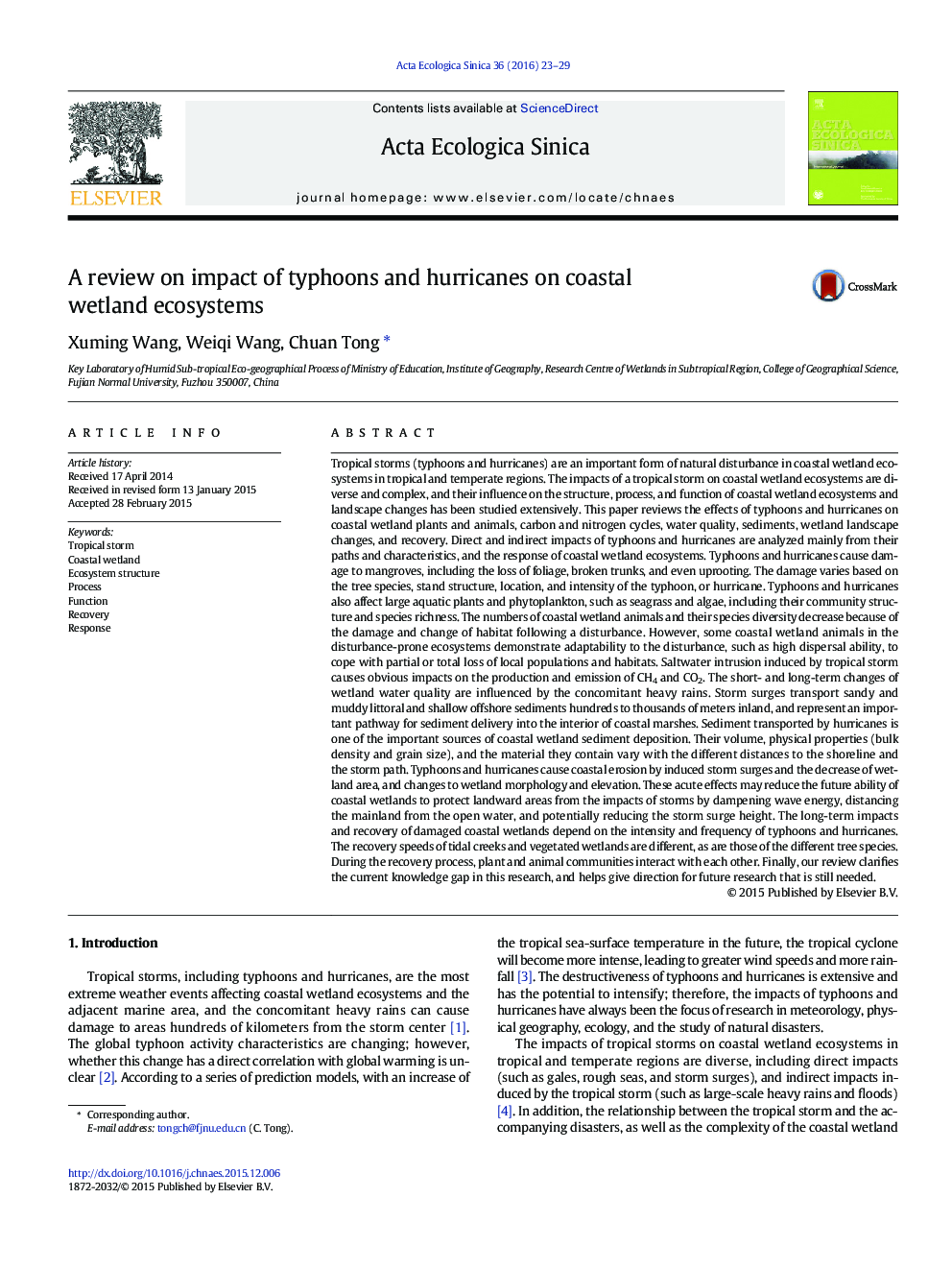| کد مقاله | کد نشریه | سال انتشار | مقاله انگلیسی | نسخه تمام متن |
|---|---|---|---|---|
| 4379760 | 1303935 | 2016 | 7 صفحه PDF | دانلود رایگان |
Tropical storms (typhoons and hurricanes) are an important form of natural disturbance in coastal wetland ecosystems in tropical and temperate regions. The impacts of a tropical storm on coastal wetland ecosystems are diverse and complex, and their influence on the structure, process, and function of coastal wetland ecosystems and landscape changes has been studied extensively. This paper reviews the effects of typhoons and hurricanes on coastal wetland plants and animals, carbon and nitrogen cycles, water quality, sediments, wetland landscape changes, and recovery. Direct and indirect impacts of typhoons and hurricanes are analyzed mainly from their paths and characteristics, and the response of coastal wetland ecosystems. Typhoons and hurricanes cause damage to mangroves, including the loss of foliage, broken trunks, and even uprooting. The damage varies based on the tree species, stand structure, location, and intensity of the typhoon, or hurricane. Typhoons and hurricanes also affect large aquatic plants and phytoplankton, such as seagrass and algae, including their community structure and species richness. The numbers of coastal wetland animals and their species diversity decrease because of the damage and change of habitat following a disturbance. However, some coastal wetland animals in the disturbance-prone ecosystems demonstrate adaptability to the disturbance, such as high dispersal ability, to cope with partial or total loss of local populations and habitats. Saltwater intrusion induced by tropical storm causes obvious impacts on the production and emission of CH4 and CO2. The short- and long-term changes of wetland water quality are influenced by the concomitant heavy rains. Storm surges transport sandy and muddy littoral and shallow offshore sediments hundreds to thousands of meters inland, and represent an important pathway for sediment delivery into the interior of coastal marshes. Sediment transported by hurricanes is one of the important sources of coastal wetland sediment deposition. Their volume, physical properties (bulk density and grain size), and the material they contain vary with the different distances to the shoreline and the storm path. Typhoons and hurricanes cause coastal erosion by induced storm surges and the decrease of wetland area, and changes to wetland morphology and elevation. These acute effects may reduce the future ability of coastal wetlands to protect landward areas from the impacts of storms by dampening wave energy, distancing the mainland from the open water, and potentially reducing the storm surge height. The long-term impacts and recovery of damaged coastal wetlands depend on the intensity and frequency of typhoons and hurricanes. The recovery speeds of tidal creeks and vegetated wetlands are different, as are those of the different tree species. During the recovery process, plant and animal communities interact with each other. Finally, our review clarifies the current knowledge gap in this research, and helps give direction for future research that is still needed.
Journal: Acta Ecologica Sinica - Volume 36, Issue 1, February 2016, Pages 23–29
